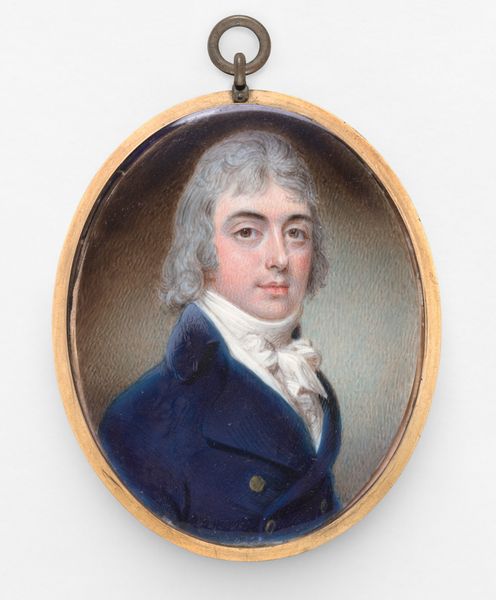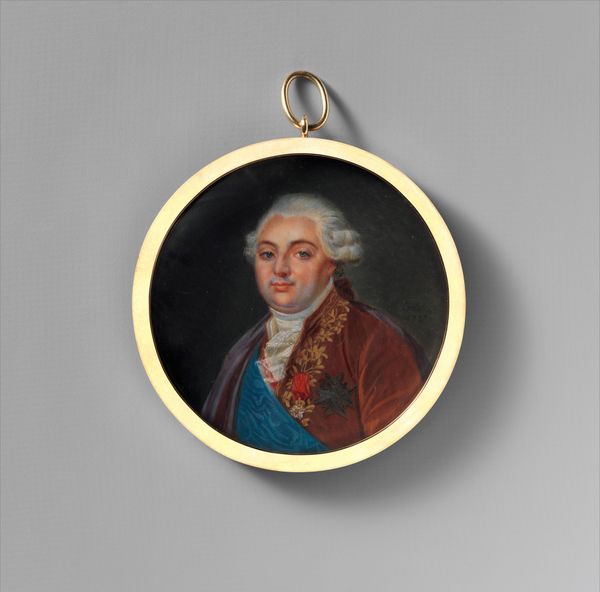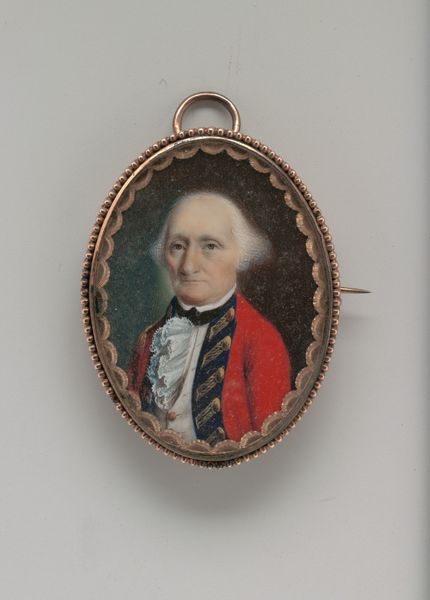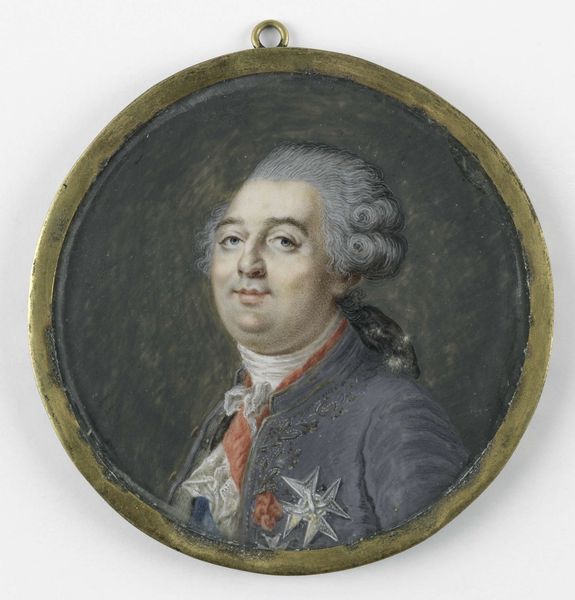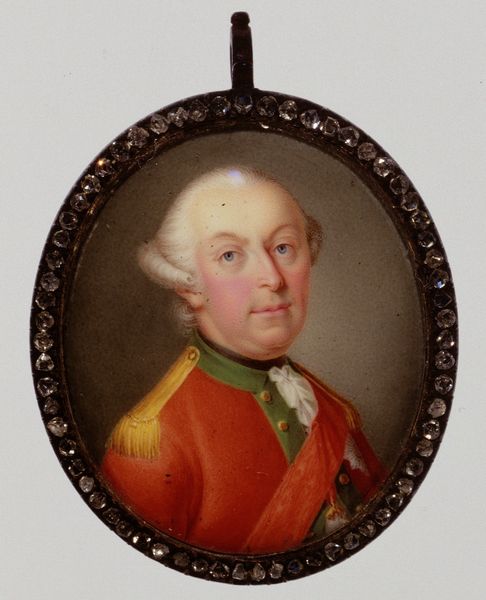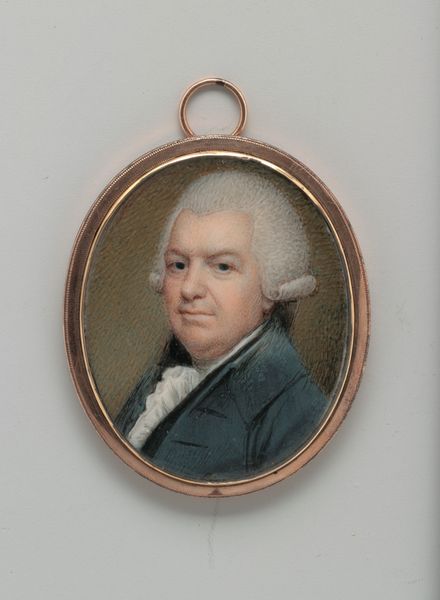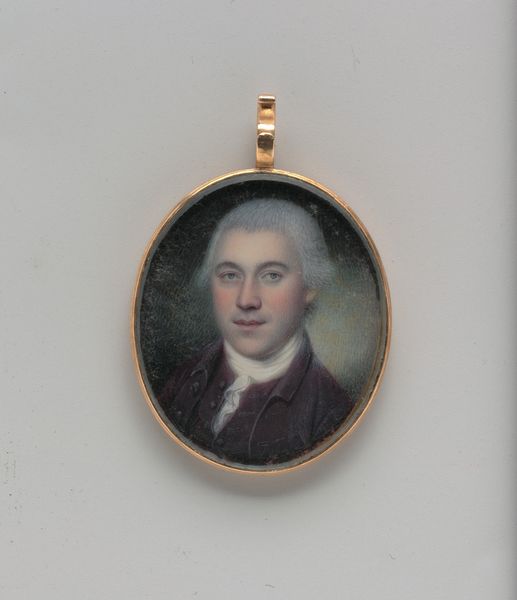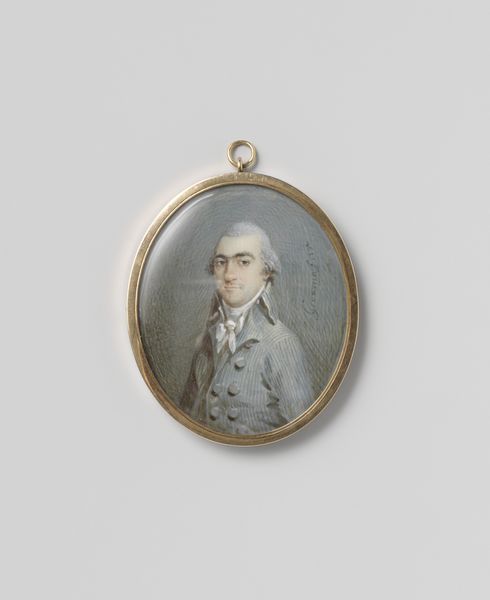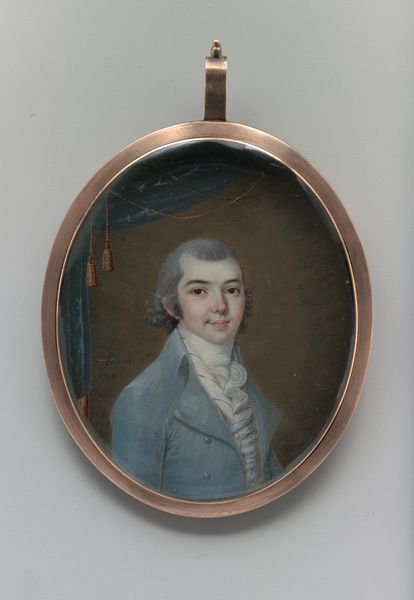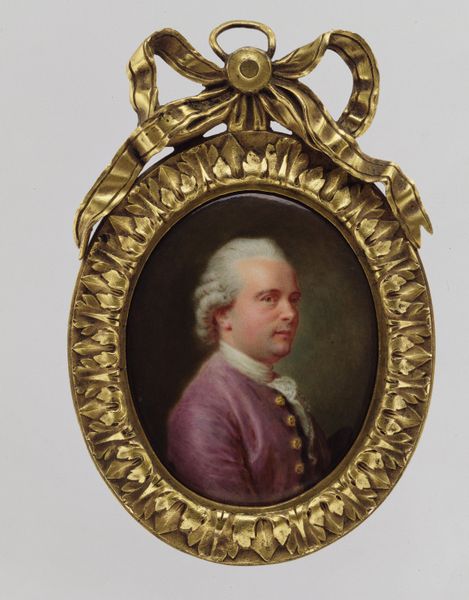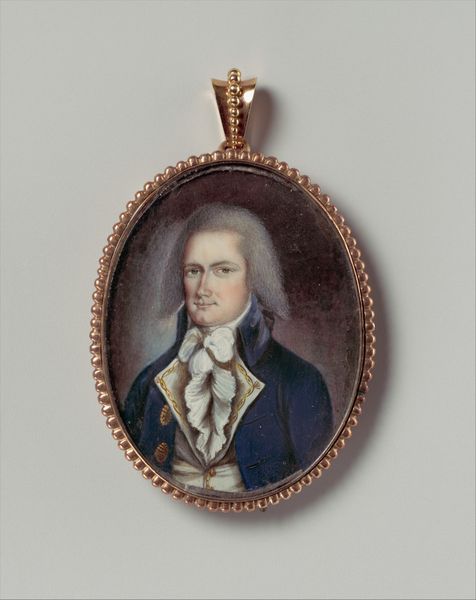
painting, oil-paint
#
portrait
#
baroque
#
painting
#
oil-paint
#
strong focal point
#
men
Dimensions: 1 3/4 x 1 3/8 in. (4.4 x 3.5 cm)
Copyright: Public Domain
Curator: Here we have a miniature portrait of John St. Clair, rendered in oil paint. John Singleton Copley completed this piece in 1758, and it is currently held at the Metropolitan Museum of Art. Editor: It’s remarkable how this small, oval form holds such presence. The subject's rosy cheeks give a feeling of warmth, of life pushing against the dark backdrop and the stiffness suggested by his formal attire. It strikes me as both intimate and official. Curator: The crimson military coat worn by St. Clair, sharply contrasted with a darker blue, signals authority, doesn't it? Red has often been aligned with power and courage throughout history, and that association is quite clear here. He also wears a pure white stock which could symbolize innocence and purity, while its contrast with his military clothing can hint at dual loyalty, civilian or militaristic? Editor: Considering that Copley used oil paint here on such a minute scale, I am compelled to think about his working conditions. Imagine how reliant he must have been on natural light, painstakingly mixing such bright colors from raw materials in the mid-18th century, not to mention the cost of such high-quality pigments for his patron to bear. This labor-intensive aspect imbues the work with its aura. Curator: The Baroque influence is tangible, evident in the drama, intensity, and implied movement—qualities further emphasized by the symbolic weight given to colors and textures of clothing. He almost looks as if he is mid-motion, maybe about to offer some instruction. Editor: And how would it have been received? As a trinket to carry or gift perhaps, showing possession? The golden loop would have let its bearer display and showcase ownership but it is so small... What a feat it is to own even a likeness in a consumer society where production depends on specialized roles in labor to produce it and for what function and market exactly? Curator: Indeed, perhaps this miniature acted as a symbolic extension of St. Clair himself, carried to reaffirm rank and legacy, not just displaying likeness, yet it's the way in which symbols get consumed and displayed, the social function of their consumption which I see to be more fascinating here. Editor: Well, looking again, the way the oil paint has aged actually speaks to a deeper material temporality that also moves me. The objecthood of John St. Clair lives on despite its small presence through material qualities which stand the test of time!
Comments
No comments
Be the first to comment and join the conversation on the ultimate creative platform.
